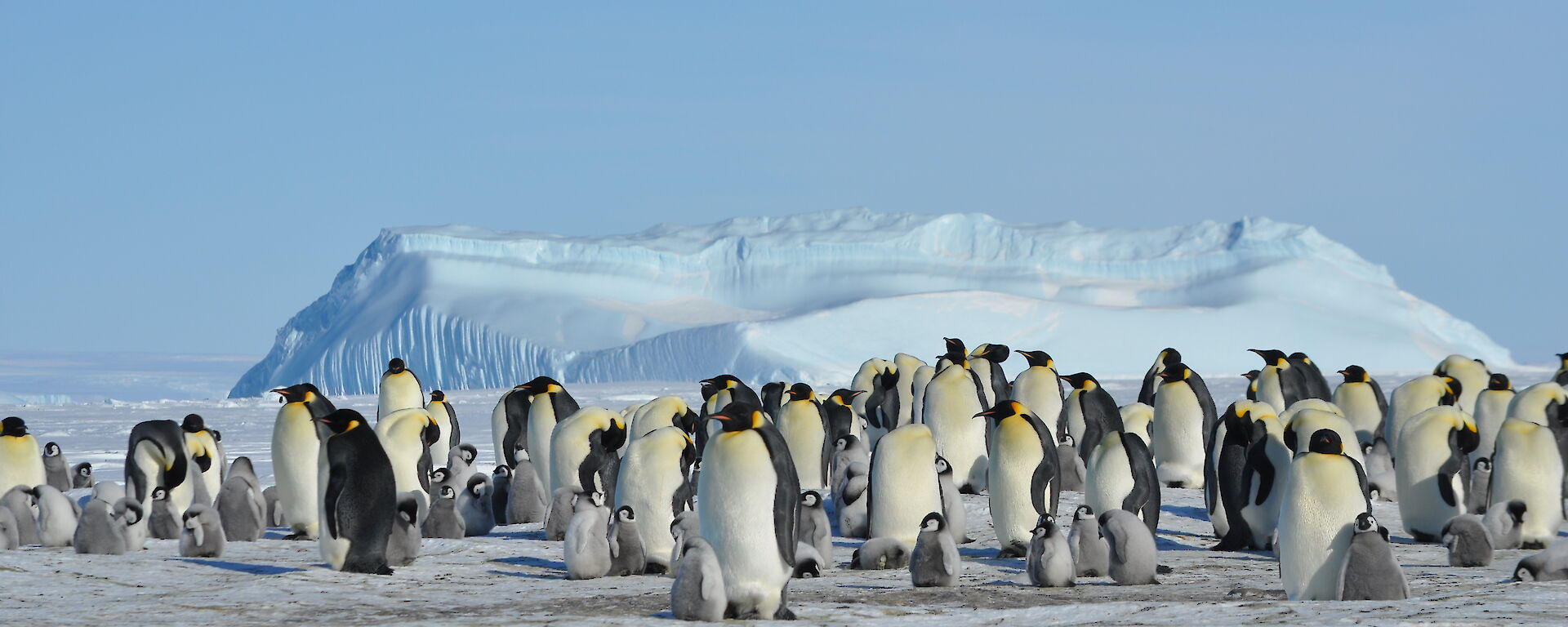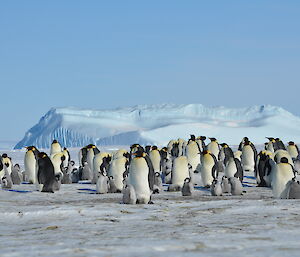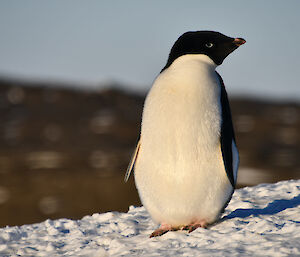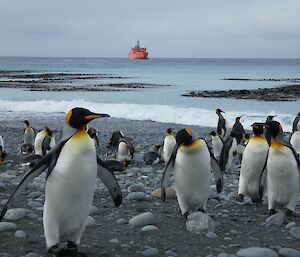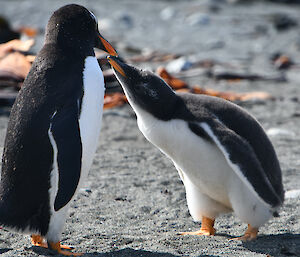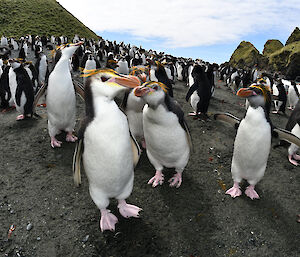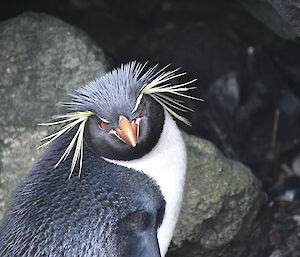One of the best things about working at any of the Australian Antarctic Program (AAP) stations is that you will have the opportunity to have encounters with the most amazing of flightless birds – the penguins. Mawson is famous for the hardy and brave emperor penguin, one of the few animals who braves an Antarctic winter instead of waiting it out at the sea ice edge. Davis and Casey have a plethora of high energy and high personality Adélie penguins, as well as the occasional visit from a teenage emperor gone wandering because it’s a bit boring watching the parents sit on their eggs all winter. But Macca is ultimately where the best penguin action is to be found. The facts are undisputable; the island has the highest number of penguin species of all the AAP stations (Kings, Royals, Gentoos, Rockhoppers and the occasional chin strap visitor), penguins reside year round, both within station limits and able to be visited in the field, thus providing the most opportunities for an encounter* with these brilliant birds
*Encounters: There are strict rules for all wildlife interaction/encounters. There are minimum approach distances, but the overarching rule of this is regardless of how far you are away if they are showing any signs of alertness or distress you move on further away
The animals may come to you if you are lucky – sit quietly, sit low, sit still, sit at the correct approach distance, sit so the animals have an exit around you and you are not encircling them or creating a barrier to their passage – chances are they may approach.
If they do approach, the animal is fully in control of the encounter. Remain like a rock as much as you can, squeal and express joy inside your head and make wonderful memories, and wait until the animal moves on.
Bring the best lens you can afford (or make friends with an expeditioner who has one) and you’ll be able to get those amazing up close photos.
A few non-scientific notes on the different penguin species from nearly a decade of loving these birds
- Emperor penguin. As majestic as the name implies, these birds are an absolute sight to behold. It feels like you’ve steeped into a real life wildlife documentary when the black shapes in the distance emerge as an Emperor colony on the sea ice in winter. With a call that sounds like a heraldic trumpet, they embody their name. However they’re not always stuffy and formal, when they flop down on their bellies to toboggan they make the most delightful exhalation that sounds like a cross between a sigh and a giggle. 10/10 you elegant and brave souls
- Adélie penguin. An absolute champion of a bird with the biggest personality and the greatest weight:fight ratio out of all the penguins. Much smaller than their emperor brethren, these birds will absolutely take on anyone who threatens them or their colony. As skuas and petrels fly low over the colony you can track their progress by the raised heads and wings, and angry shouts from the Adélies. Similarly if the birds try to steal an egg or chick they will go all in with their strong flippers to defend their young. They have been known on occasion to come up to expeditioners drilling sea ice or sled hauling and let them know their opinion of our activities on their ice. I can watch these birds for hours – their waddling walk and tobogganing is delightful, as is their constant changes of direction as they move in and out of the group they’re travelling with across the ice. 12/10 you hilarious darlings of the sea ice
- King penguin. A smaller version of their regal brethren, these birds live on Macquarie Island. They look incredibly stylish in their black gumboot clad feet and their yellow feathers are a ray of sunshine in the gloom. Their call sounds more like a kazoo, so it always brings a smile when heard. These birds are full of curiosity. If you sit quietly at Gadget’s Gully or the beach of Green Gorge Hut you are soon to find yourself surrounded by them. They’re cheeky too, not afraid to give your boots the occasional peck. 10/10 you golden darlings
- Gentoo penguin. I’m biased but these are a personal favourite. Looking gorgeous and quirky with their orange beak and matching feet they are the style leaders of Macquarie. They’re also incredibly smart, as they move their nests/colony each season to avoid parasites and stay clear of their waste (their nest sites at the end of breeding season look like a Jackson Pollock artwork). When they walk through the mud their feet make the sweetest splish splash sound. They’re also the fastest swimmers at 35 km/h, but do not always make an elegant exit from the sea as they battle the waves and strong currents. 12/10 the 70s never went out of style for you.
- Royal penguins. Brave or foolhardy, these birds breed up on the hillside of Macca, making the daily long trek to the sea for food during the breeding season. Power of numbers and a cheeky attitude they know they rule the beach at Sandy Bay. Small birds but big hearts, they will tell the elephant seals what for as they haul out near them. Fabulous crested hair do as well, they bring a sense of whimsy to the penguin family. They’ve headed out to sea for now, but will return in September for breeding season. We look forward to your return, little buddies. 10/10 for the hair toss and attitude
- Rockhoppers. Punk by appearance, punk by nature. With a crest that looks like a lawn mower took out the middle and red eyes these birds look fierce. They have been known in the past to bite scientists working in their colonies, but I think that is just a sign of how passionate they are about protecting each other. They’re the shiest of penguins on Macca, your best chance of seeing them is actually hearing them. Making a distinctive honking sound their calls echo from the rocky caves of Garden Cove and below the Ham Shack. If you sit quietly in Garden Cove there’s a chance you’ll see one of the sentries come to the cave opening. A long lens is definitely your friend for getting photos of these fabulous birds 12/10 for walking to the beat of your own drum
Join me in a few months for my next episode where I rank the seals of Antarctica and the sub-Antarctic (you know they’re all winners).

